Introduction To Digital Marketing
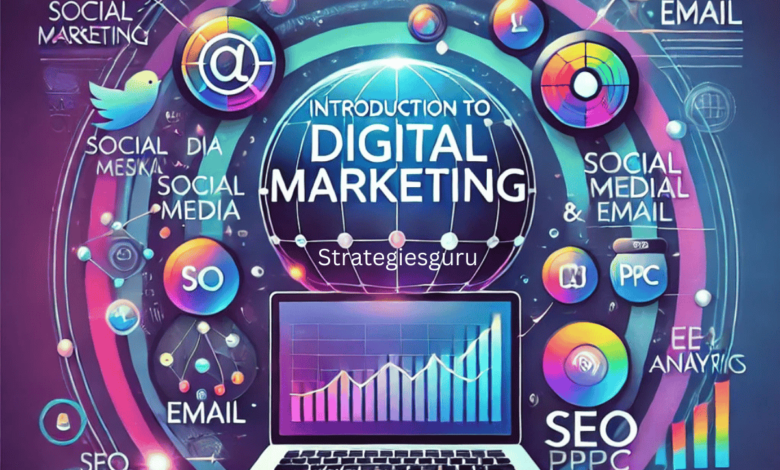
Contents
- 1
- 2 Summary for Introduction To Digital Marketing
- 3 What is Digital Marketing?
- 4 Search Engine Optimization (SEO)
- 5 Content Marketing
- 6 Social Media Marketing
- 7 Pay Per Click (PPC)
- 8 Affiliate Marketing:
- 9 Native Advertising
- 10 Marketing Automation:
- 11 Email Marketing
- 12 Online public reaction
- 13 Inbound Link
Summary for Introduction To Digital Marketing
Digital marketing encompasses all online strategies to promote products and services using platforms like hunt machines, social media, dispatch, and websites. It includes practices similar as SEO to ameliorate visibility, content marketing to engage cult, social media marketing for brand mindfulness, and PPC advertising for immediate business. Businesses can also work chapter marketing, native advertising, and marketing robotization to streamline sweats and boost effectiveness. With tools like analytics and followership targeting, digital marketing enables brands to track performance, foster trust through precious content, and make lasting client connections, making it a vital approach for ultramodern business success.
What is Digital Marketing?
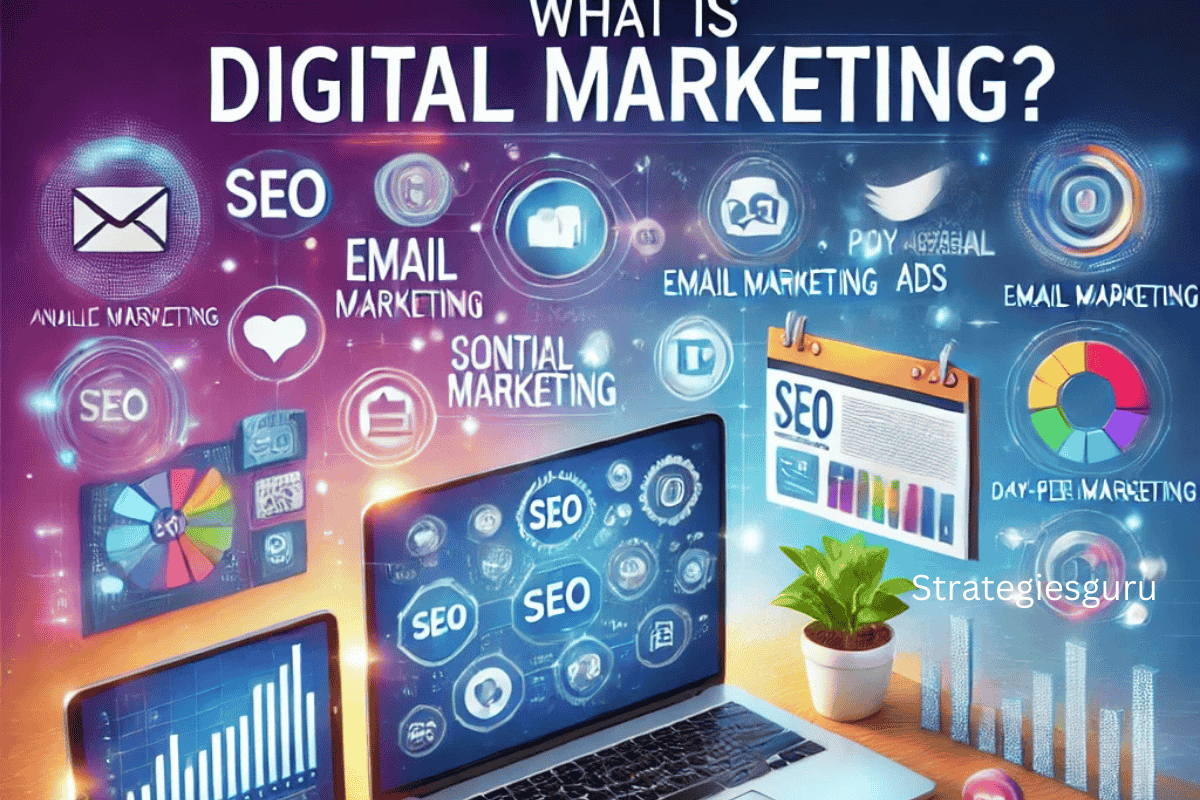
Digital marketing covers all marketing efforts that use the internet. Business influence digital channel similar as hunt machines, social media dispatch, and other website to connect with being and prospective guests. Digital Marketing is the act of promoting and dealing product and services by using online marketing plans similar as social media marketing hunt marketing, and dispatch marketing. If offer numerous options and strategies to get creative and experimental with a variety of marketing tactics on budget. With digital marketing you can also use tools like analytics dashboard to cover the success and return on investment of your juggernauts further than you could with a traditional promotional content similar as billboard or print advertisement.
Search Engine Optimization (SEO)

Search Engine Optimization (SEO) is the practice of optimizing a website’s content, structure, and specialized rudiments to rank advanced in hunt Search Engine Result Page (SERPs) and attract organic business. It involves using applicable keywords, creating high- quality content, perfecting point speed, and erecting backlinks.
For example An e-commerce point selling shoes can optimize by targeting keywords like” buy handling shoes online,” creating product descriptions, and icing fast runner lading times to appear prominently on Google.
-
On Page SEO:
The technique of optimizing individual web pages to raise their search engine ranks and draw in organic traffic is known as “on-page SEO.” It include improving the content’s internal links, headers, URL structure, titles, meta descriptions, and keyword utilization.
For example, While making sure the material is interesting and pertinent, a blog post about “Best Trekking Gear for Beginners” can carefully include the keyword in the title, headers, and body of the piece.
-
OFF Page SEO:
In order to increase your website’s authority, reputation, and ranking in search engine results, off-page SEO focuses on actions that take place outside of it. To boost exposure and credibility, this involves guest blogging, social media marketing, backlink development, and online reputation management.
Example The legitimacy and rankings of your travel blog might be increased by obtaining a high-quality backlink from a well-known website like Lonely Planet through a guest post.
-
Technical SEO:
In order for search engines to effectively crawl, index, and rank a website, technical SEO entails improving the backend and infrastructure of the website. This entails enhancing mobile responsiveness, site performance, broken link repair, and structured data implementation.
Example For an e-commerce website, ensuring that product runners’ cargo snappily, have a mobile-friendly design, and use schema luxury for reviews helps search machines display rich results, perfecting visibility.
Content Marketing
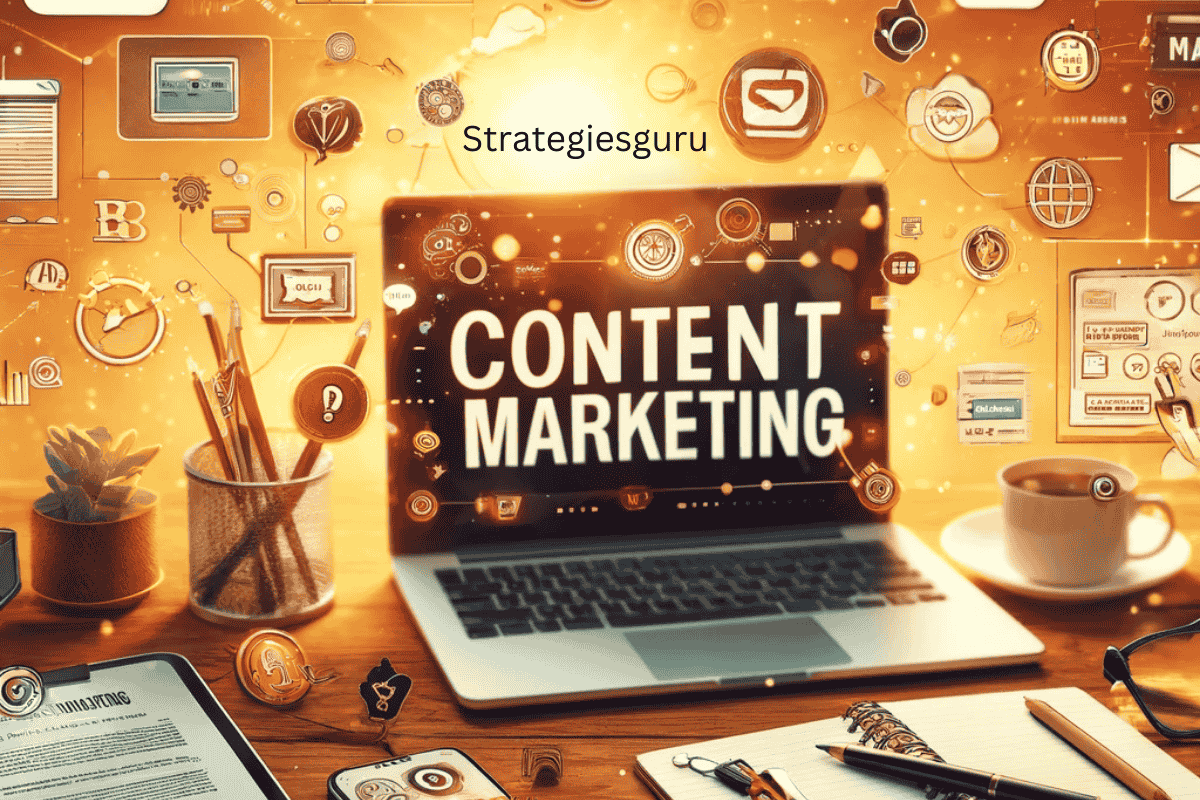
In order to draw in and hold on to a well-defined audience and eventually encourage lucrative consumer behavior, content marketing is a strategic strategy that focuses on producing and disseminating useful, pertinent, and consistent material. Depending on the needs of the audience, they might include blogs, videos, infographics, and social media posts.
Example A fitness company may write a series of posts on blogs on “Home Workouts for Beginners,” providing helpful advice and tying in with their resistance bands and yoga mats.
-
Blog posts
Blog posts are written pieces that are posted on a website with the intention of entertaining, educating, or informing visitors. They frequently cover certain subjects or provide answers to queries. In order to engage audiences, increase traffic, and boost SEO, they are a crucial component of content marketing.
Example a travel site may write a piece titled “Top 10 Must-Visit Places in Uttarakhand,” inspiring readers with advice, firsthand accounts, and breathtaking imagery.
-
E-book and Whitepapers:
Whitepapers, or and digital books are lengthy, in-depth documents that offer important information on a particular subject. Whitepapers are more formal and data-driven, providing answers or insights to complicated issues, whereas e-books are frequently visually appealing and easy to read guides.
Example A marketing company might publish an e-book named” Social Media Strategies for Startups” or a whitepaper on” The Future of AI in Digital Marketing,” targeting specific cult with detailed knowledge.
-
Info Graphics:
Infographics are visual representations of facts, information, or expertise that are intended to make difficult concepts more approachable and interesting. They swiftly communicate a story or important ideas by combining charts, pictures, and sparse text.
Example A digital marketing agency might create an infographic named” The Ultimate SEO roster,” featuring step- by- step tips with icons and graphs to help druggies ameliorate their website rankings.
Social Media Marketing

Plates are visual representations of data, information, or moxie that are intended to make delicate generalities more approachable and intriguing. They fleetly communicate a story or important ideas by combining maps, filmland, and meager textbook. Using social media spots like Facebook, Instagram, Twitter, LinkedIn, and others to announce goods, services, or content is known as social media marketing. In order to engage an followership, increase brand recognition, and boost business or deals, it entails producing and propagating witching posts, vids, announcements, or narratives. Businesses may target certain demographics, increase their following, and produce enduring connections with guests by engaging with druggies and exercising tools like hashtags, analytics, and patronized elevations.
Pay Per Click (PPC)
Graphics are visual representations of facts, information, or expertise that are intended to make difficult concepts more approachable and interesting. They swiftly communicate a story or important ideas by combining charts, pictures, and sparse text. A price is paid by advertisers using the pay-per-click (PPC) internet advertising model each time a user clicks on their advertisement. Instead of obtaining website visitors naturally, you may purchase them. Targeting certain phrases, demographics, or hobbies, PPC advertisements can be seen on social media platforms or on search engines like Google. If you own a shoe business, for instance, you might make a PPC ad that says “buy running shoes” and shows up at the top of search results. It is a cost-effective method of directly attracting potential clients because you only pay when someone clicks on the advertisement.
Paid Ads on Facebook:
Graphics are visual representations of facts information or expertise that are in tended to make difficult concept more approachable and interesting. They swiftly communicate a story or important ideas by combining charts, pictures, and sparse text. Advertisements that companies or individuals purchase on Facebook in order to reach a wider or more targeted audience are known as paid advertising. Designed to advertise goods, services, events, or information, these advertisements may show up in users’ feeds, Stories, Marketplace, or sidebars. Advertisers may establish specific objectives using Facebook Ads Manager, such increasing website traffic, generating leads, improving sales, or raising brand exposure. Additionally, they have the ability to target consumers according to their location, behaviour, interests, and demographics. With Facebook’s highly configurable paid advertisements, advertisers may optimize their campaign duration, ad format (carousels, photos, videos, etc.), and budget.
Twitter Ads Campaigns:
Campaigns for Twitter Ads are sponsored promotions that let companies and individuals reach a wider or more specific audience on Twitter by promoting their accounts, trends, or tweets. These campaigns aid in reaching objectives including raising brand exposure, app downloads, website traffic, and follower counts. You may use Twitter Ads to target particular audiences according to their geography, demographics, interests, and keywords. Advertisers may establish budgets to keep spending under control and select from a variety of formats, including Promoted Accounts, Promoted Trends, and Promoted Tweets. Campaigns for Twitter Ads are an effective approach to interact with users in real time and participate in popular discussions.
Affiliate Marketing:
Affiliate marketing is a performance- grounded marketing strategy where individualities or businesses, called cells, earn a commission by promoting someone additional products or services. Affiliates share unique links to the product or service through websites, blogs, social media, or other platforms. When someone clicks on the chapter’s link and makes a purchase or completes a asked action( like subscribing up for a service), the chapter earns a chance of the trade or a fixed price. It’s a palm- palm model businesses get further deals, and cells earn plutocrat for driving business or transformations without having to produce their own products.
Native Advertising
Paid advertisements known as” native advertising” feel as a natural part of the stoner experience by blending in with the platform’s content and aesthetic. Because native announcements mix in with the style, tone, and format of the girding content — similar as papers, social media feeds, or vids they do not feel as protrusive as standard announcements. exemplifications include social media bulletins that are promoted, patronized pieces on news websites, and happy recommendations at the conclusion of papers. By offering value and applicability while discreetly promoting a good or service, native advertising aims to increase stoner engagement.
Marketing Automation:
Graphics are visual representations of facts, information, or expertise that are intended to make difficult concepts more approachable and interesting. They swiftly communicate a story or important ideas by combining charts, pictures, and sparse text.By employing specialized software to streamline and automate monotonous marketing operations, marketing automation enables organizations to focus on targeted communication while effectively engaging their audience. It is a tactic that increases the overall efficacy of marketing initiatives, saves time, and enhances the consumer experience.
-
email Newsletters
Businesses may deliver targeted email newsletters to particular audience segments thanks to marketing automation. In order to ensure timely and pertinent communication, you may automate welcome emails, promotional offers, or reminders depending on user activity or preferences.
-
Social Media Post Scheduling
Graphics are visual representations of facts, information, or expertise that are intended to make difficult concepts more approachable and interesting. They swiftly communicate a story or important ideas by combining charts, pictures, and sparse text. Businesses may maintain continuous online engagement by using automation to plan social media postings in advance. Without requiring human labor, tools assist in scheduling and publishing material on social media sites like Facebook, Instagram, and Twitter at the best times to increase audience interaction.
-
Lead Nurturing Workflows
Automated workflows companion implicit guests through the deals channel by transferring them acclimatized content or follow- ups grounded on their conduct( e.g., subscribing up, downloading a companion). This helps make trust and encourages leads to convert into pious guests over time.
-
Campaign tracking and reporting:
Automation tools give detailed perceptivity into how juggernauts are performing, including criteria like dispatch open rates, click- through rates, and transformations. These reports help marketers assay results and optimize unborn juggernauts for better issues.
Email Marketing
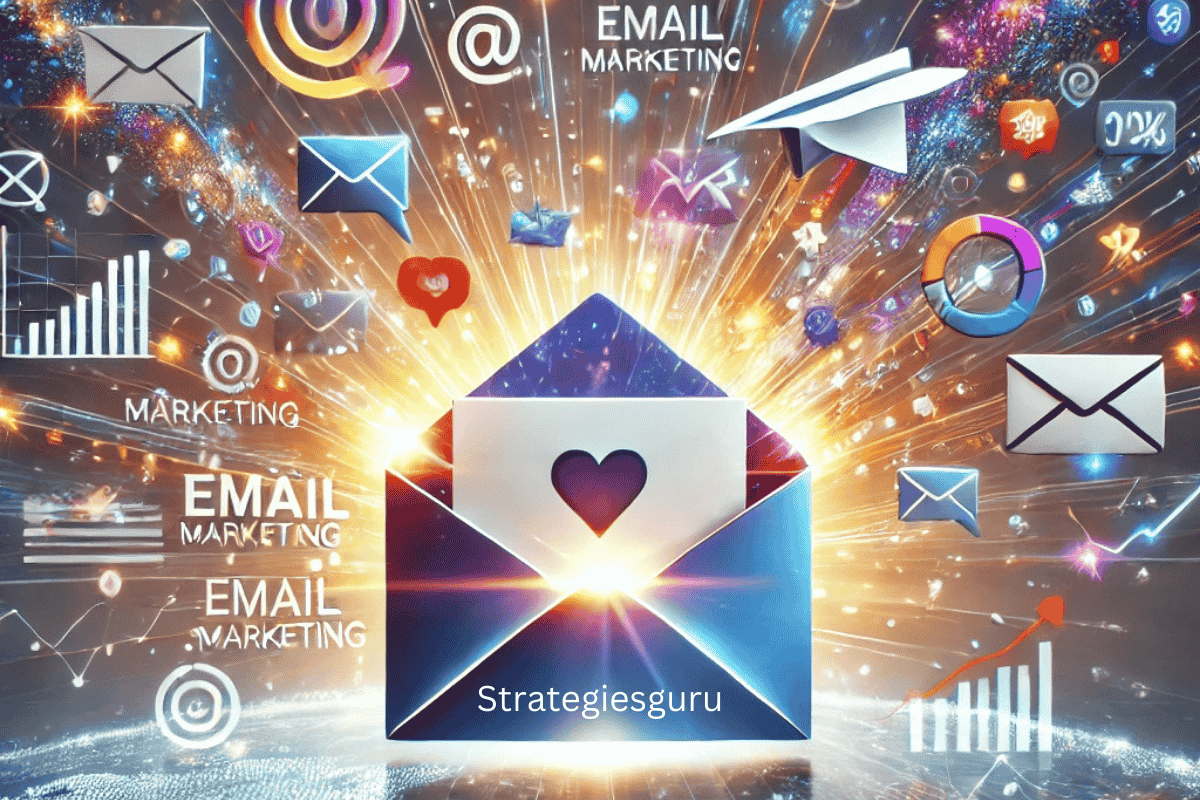
Sending targeted emails to a group of individuals in order to promote goods, services, or information, foster connections, and increase conversions is known as email marketing. Email marketing is a tool used by businesses to send their audience newsletters, updates, special offers, and customized content. It’s an affordable method of cultivating leads, interacting directly with consumers, and fostering loyalty. Email marketing is an effective way to increase engagement and accomplish corporate objectives because it can be customized to match the demands of certain audiences and monitor effectiveness using tools like segmentation, automation, and analytics.
Online public reaction
Online public response refers to the collaborative responses, opinions, and feedback from people on digital platforms like social media, forums, blogs, or websites regarding a particular event, product, service, or issue. It reflects how the public perceives and engages with content, frequently through commentary, likes, shares, reviews, or conversations. Online public responses can snappily shape reports, influence trends, and amplify dispatches, both appreciatively and negatively. Businesses and individualities cover these responses to understand followership sentiment, address enterprises, and acclimatize strategies to maintain a positive online presence.
- Reporter outreach via social media
- Engaging online reviews of your company
- Engaging Comment on your personal website or blog
Inbound Link
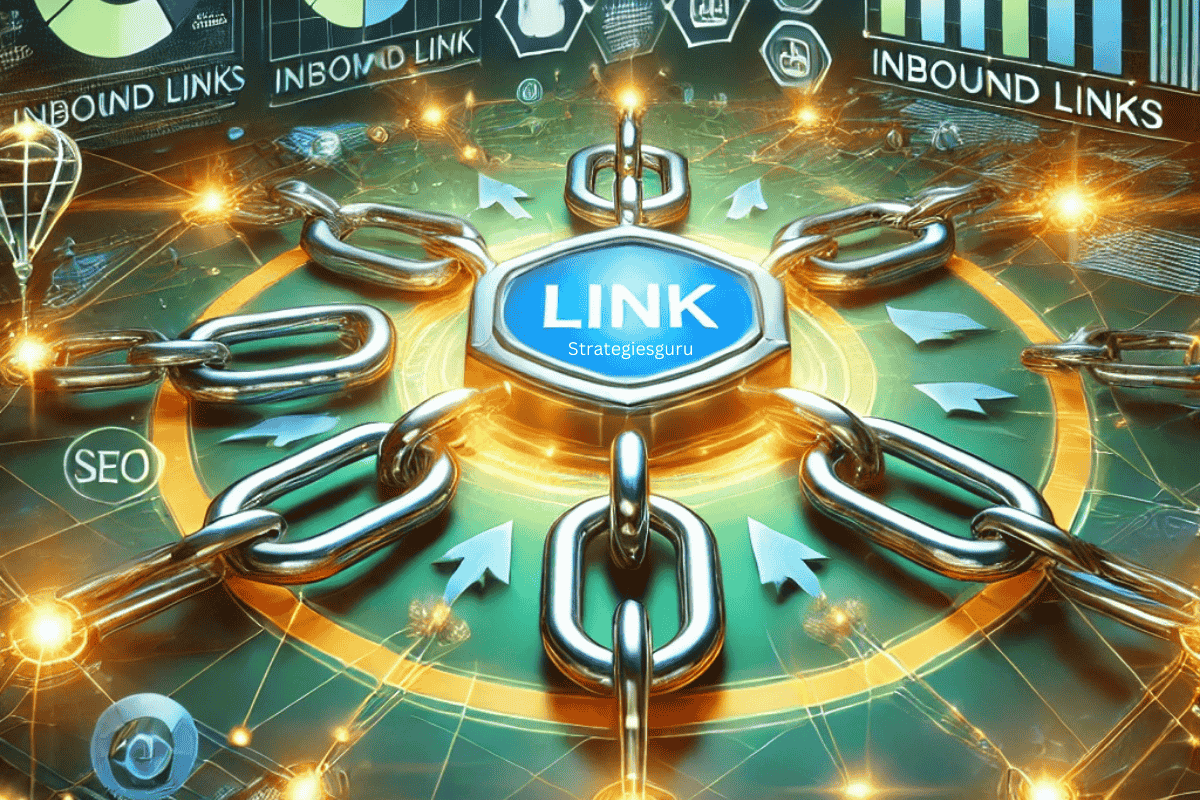
Graphics are visual representations of facts, information, or expertise that are intended to make difficult concepts more approachable and interesting They swiftly communicate a story or important ideas by combining charts, pictures, and sparse text. The goal of inbound marketing is to draw clients by producing experiences and material that are relevant to their wants and requirements.By offering useful resources like blogs, videos, social media postings, and eBooks that address their issues or provide answers to their queries, inbound marketing attracts customers rather than imposing goods or services on them. Establishing authority, fostering trust, and assisting prospective buyers as they naturally go from awareness to contemplation to decision-making are the objectives. This strategy cultivates deep ties and enduring relationships with clients.
- Blog vs pop-up ads
- Video marketing vs commercial advertising
- Email Contact
